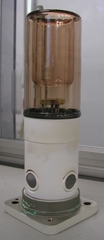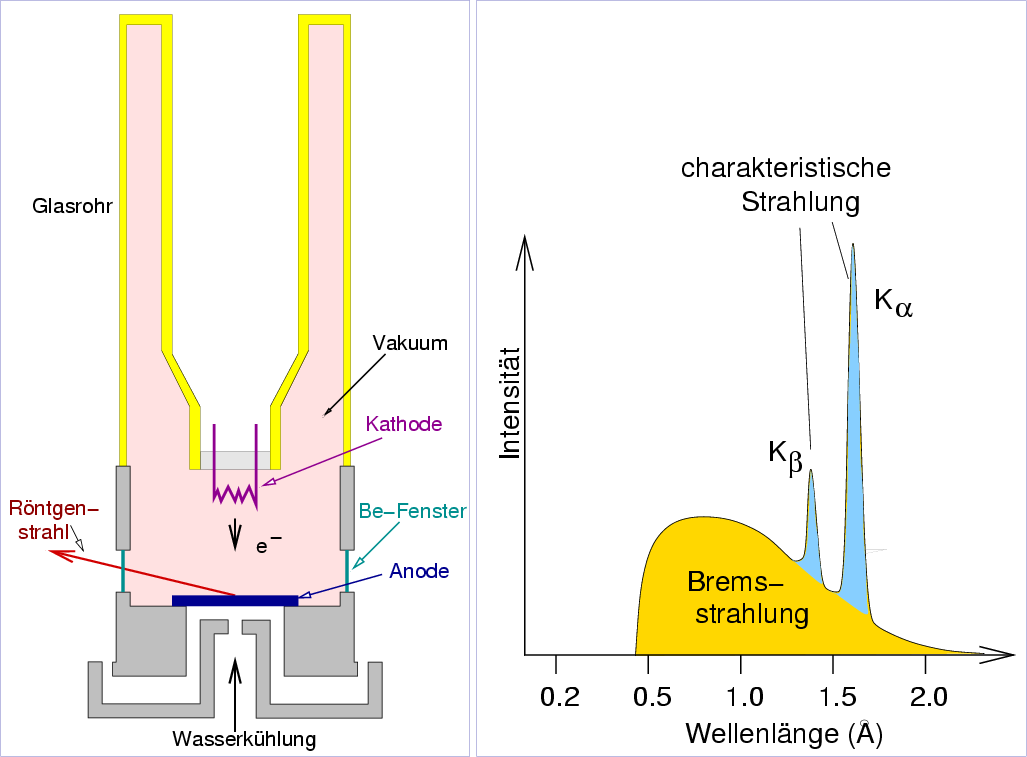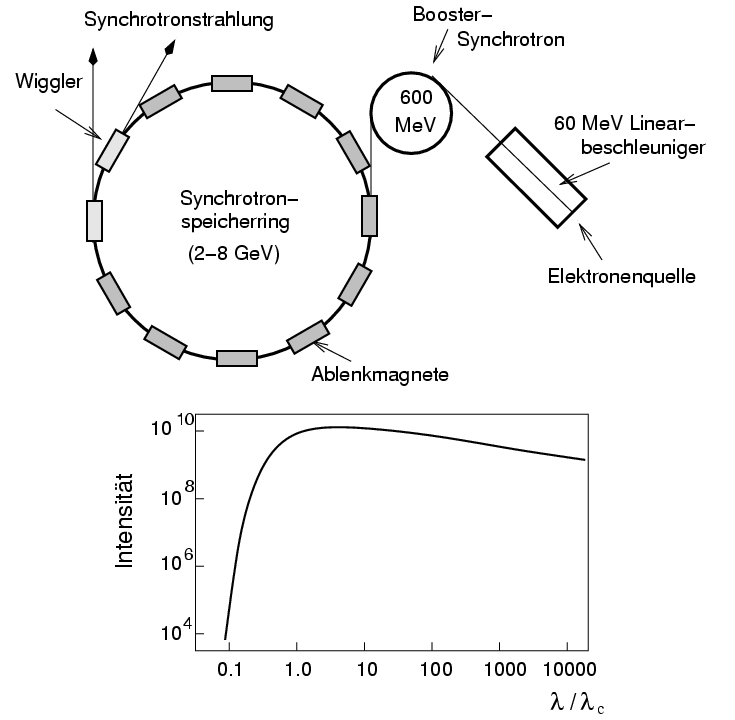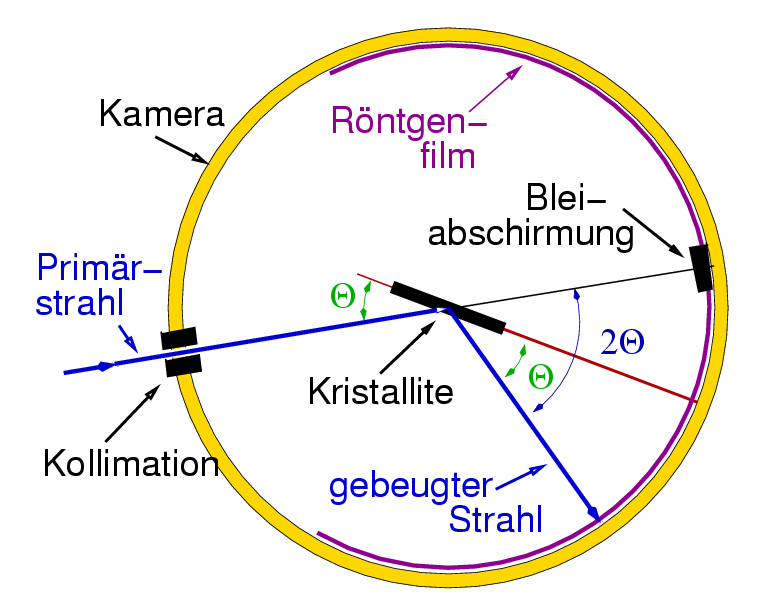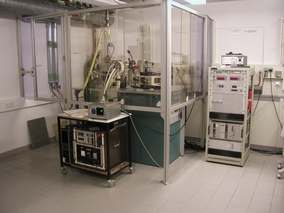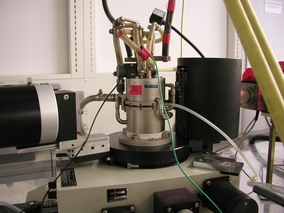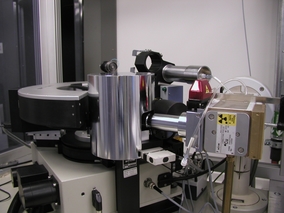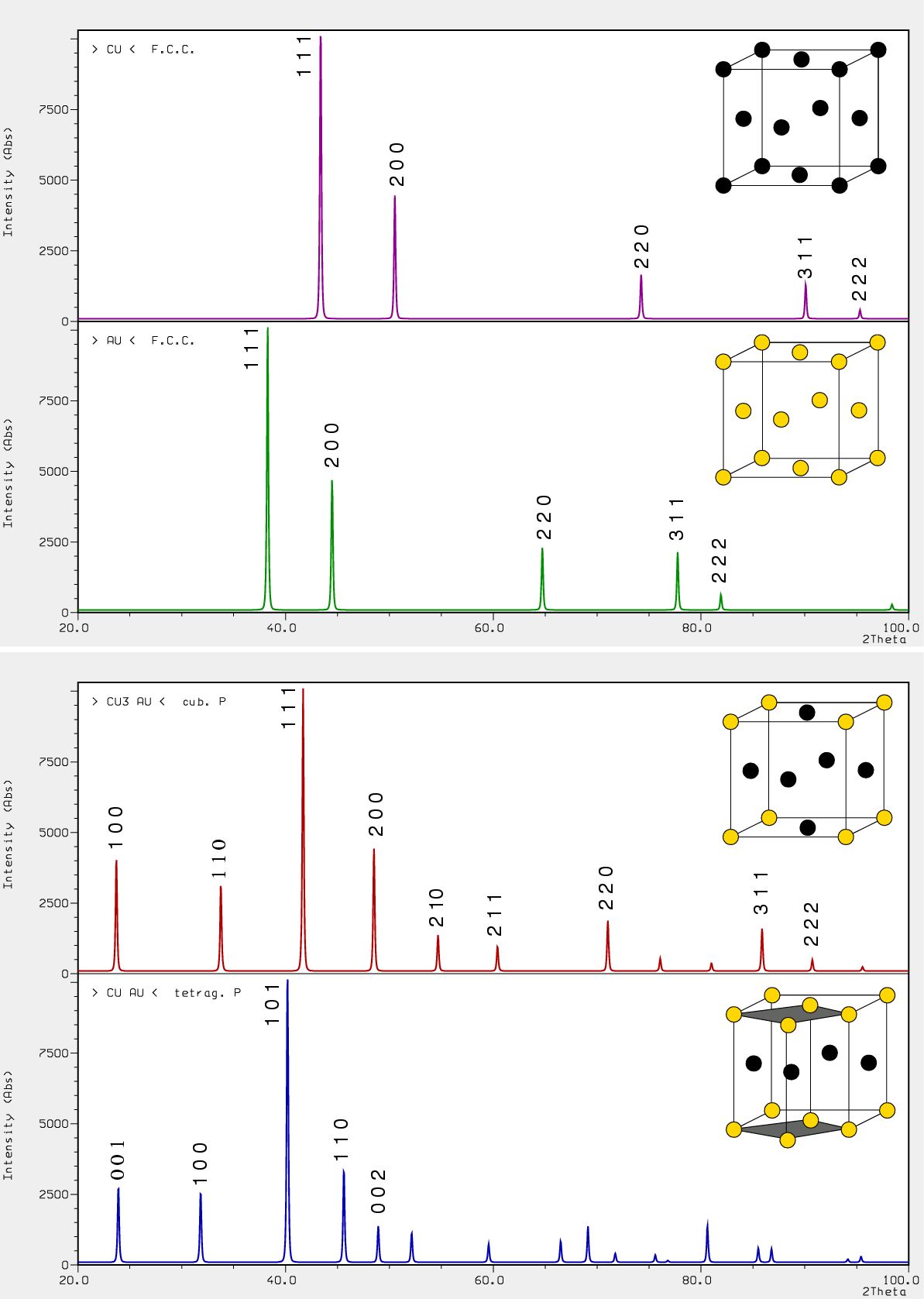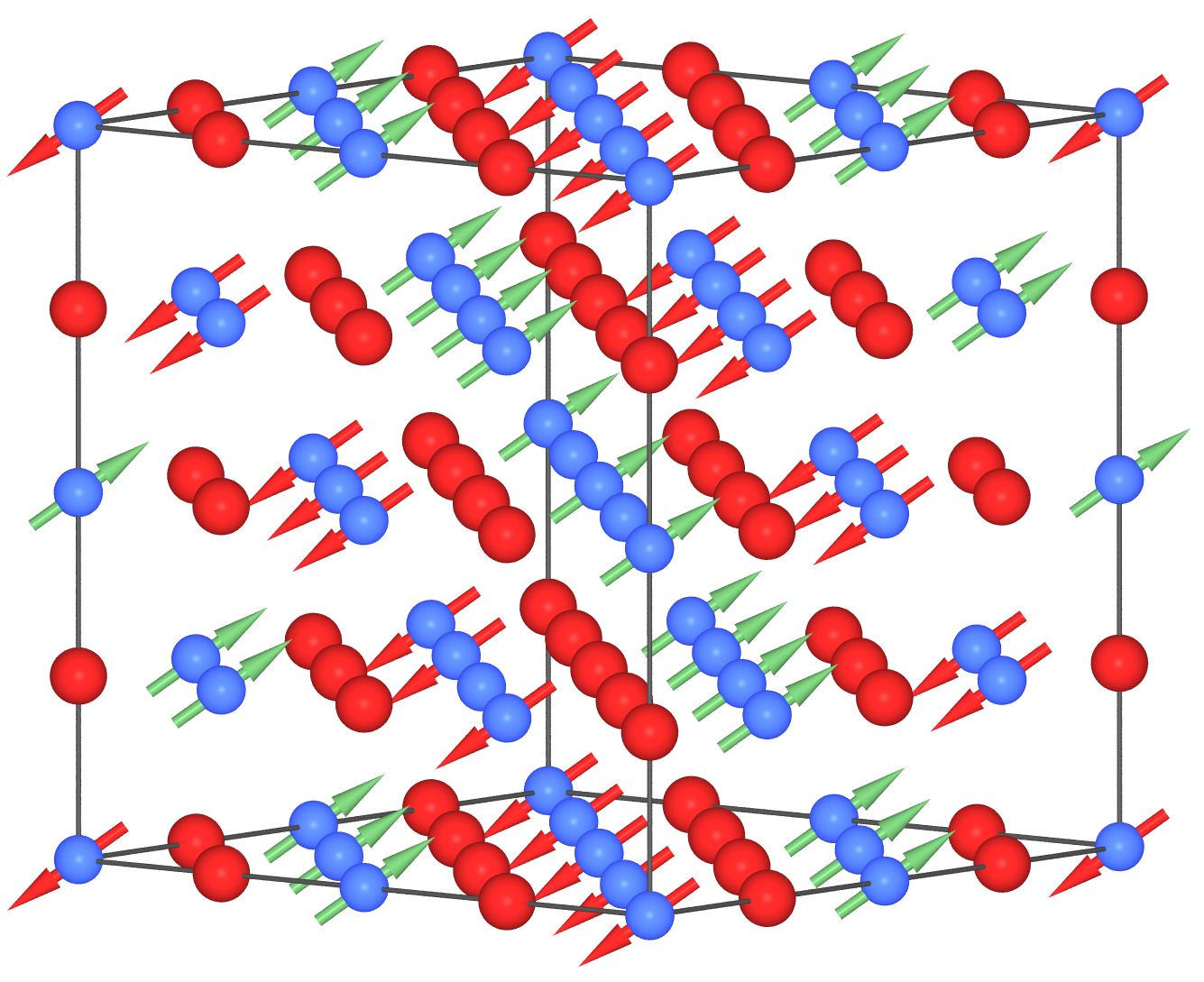Beispiel 1: I2 Iod kristallisiert orthorhombisch
(s. Kap. 2. sowie Abb. II.4.5.)
(a nach oben, c nach rechts).

|
| Abb. II.4.5. Struktur von Iod
|
Die Informationen zum Pulverdiffraktogramm finden sich z.B. in
Datenbanken wie der JCPDS. Ein solcher JCPSD-Eintrag ist im folgenden gelistet:
______________________________________________________________________________
I2 Iodine
_____________________________________________________________________________
Rad: CuKa1 Lambda: 1.54056 Filter: Mono. d-sp:
Calculated
Cutoff: 15.0 Int: Calculated I/Icor: 9.3
Ref: Martin, K., McCarthy, G., North Dakota State University, Fargo, North
Dakota, USA, ICDD Grant-in-Aid, (1991)
Sys: Orthorhombic S.G.: Cmca (64)
a: 7.2678 b: 4.7915 c: 9.8277 A: 0.7395 C: 0.4876
A: B: C: Z: 4 mp:
Ref: Ibid.
Dx: 4.926 Dm: SS/FOM: F(30)=370.8(.0025,32)
______________________________________________________________________________
Peak height intensities. Calculation of diffractometer peak intensities done
with MICRO-POWD v. 2.2 (D.K. Smith and K.L. Smith), using default instrument
broadening function (NBS Table), diffracted beam monochromator polarization
correction and atomic scattering factors corrected for anomalous dispersion.
Cell parameters from 43-304. Atomic positions from Harris, P. et al., J.
Am. Chem. Soc., 50 1583 (1928): I in 8f with y=0.1156, z=0.1493. Isotropic
thermal parameters estimated as 1.0 for I. Intensity threshold for 1 = 0.1%.
See 43-304 for experimental pattern. PSC: oC8. Mwt: 253.81. Volume[CD]:
342.24.
Strong lines: 3.10/X 3.63/6 3.71/5 1.98/2 2.04/2 2.46/2 1.96/2
2.33/1
115 reflections in pattern. Page 1 of 4. Radiation= 1.54050
-------------------------------------------------------------------------------
| 2-theta | Int.| h k l | 2-theta | Int.| h k l |
|---------+-----+----------------------+---------+-----+----------------------|
| 18.036 | 2 | 0 0 2 | 46.945 | 10 | 0 2 3 |
| 23.998 | 52 | 1 1 1 | 50.167 | 7 | 4 0 0 |
| 24.474 | 62 | 2 0 0 | 50.539 | 3 | 3 1 3 |
| 28.755 | 100 | 1 1 2 | 51.777 | 7 | 1 1 5 |
| 30.568 | 1 | 2 0 2 | 53.365 | 2 | 0 2 4 |
| | | | | | |
| 35.378 | 9 | 1 1 3 | 53.642 | 13 | 2 2 3 |
| 36.540 | 18 | 0 0 4 | 53.741 | 1 | 4 0 2 |
| 37.504 | 2 | 0 2 0 | 56.103 | 1 | 0 0 6 |
| 38.642 | 13 | 0 2 1 | 56.661 | 1 | 3 1 4 |
| 42.800 | 9 | 3 1 1 | 59.544 | 1 | 2 2 4 |
| | | | | | |
| 43.165 | 2 | 1 1 4 | 59.991 | 7 | 1 3 1 |
| 44.482 | 19 | 2 0 4 | 60.912 | 1 | 0 2 5 |
| 45.303 | 2 | 2 2 0 | 61.081 | 9 | 1 1 6 |
| 45.813 | 24 | 3 1 2 | 62.102 | 1 | 2 0 6 |
| 46.281 | 15 | 2 2 1 | 62.404 | 1 | 1 3 2 |
-------------------------------------------------------------------------------
Automatische Suchprogramme zur Phasenbestimmung
arbeiten meist auf der Basis solcher Einträge (Search-Match).
Auch die Berechnung beliebiger Diffraktogramme aus Einkristalldaten
ist selbstverständlich möglich.
Die Abbildung II.4.6. zeigt das typische Pulverdiagramm von Iod.

|
| Abb. II.4.6. Pulverdiffraktogramm von elementarem Iod
‣ SVG
|
Beobachtete Reflexe und deren Intensitäten:
- Wegen der C-Zentrierung sind nur Reflexe hkl mit h+k=2n vorhanden.
- Die Intensitäten werden mit höherem Beugungswinkel Θ geringer (vgl. die Atomformfaktoren).
- Einige d-Werte, die sich aus der Braggschen-Gleichung leicht in
aus den Reflexpositionen gewinnen lassen (λ = 1.5417 A)
- Reflex 0 0 2 bei 2Θ=18.04o --> Bragg-Gleichung --> d=4.92 A = halbe c-Achse
- Reflex 2 0 0 bei 2Θ=24.47o --> Bragg-Gleichung --> d=3.63 A = halbe a-Achse
- Die Intensität des Reflexes 0 0 2 ist wesentlich kleiner als die des
Reflexes 2 0 0, was unmittelbar aus der Belegung der Netzebenen mit Atomen deutlich wird.
